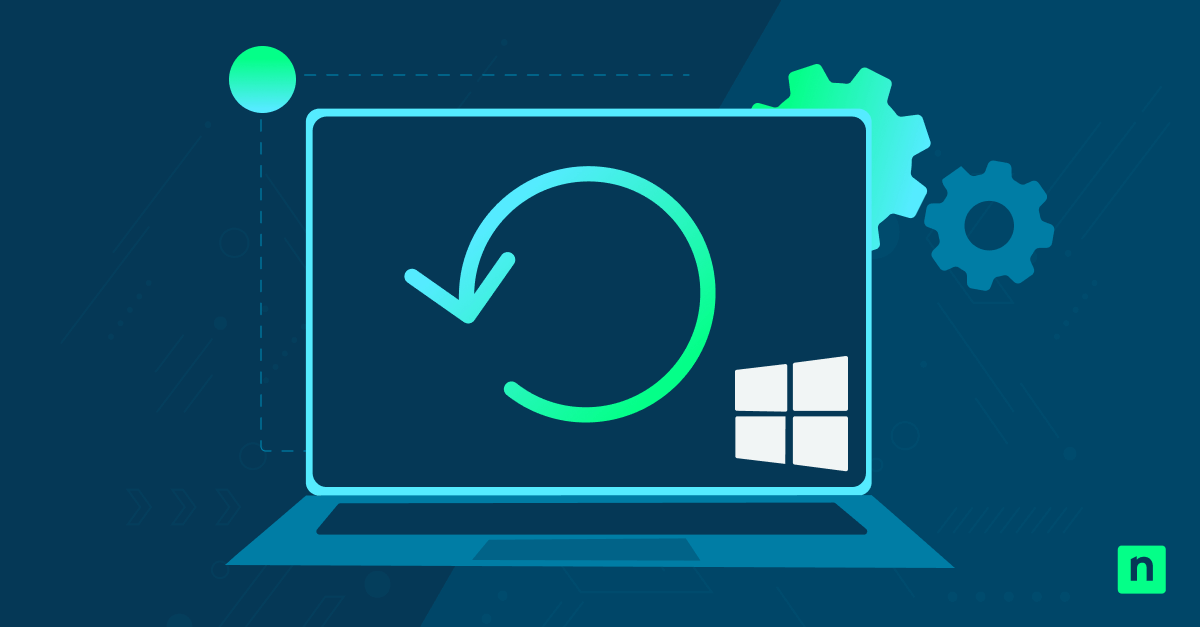When it comes to IT operations, maintaining seamless service delivery often requires more than just high-level Service Level Agreements (SLAs) — an Operational-Level Agreement (OLA) is also a must-have in many cases. This frequently overlooked component bridges gaps between support teams — both internal and external — and ensures consistent performance.
For IT managers, service delivery managers, and business leaders, understanding OLAs proves crucial for optimizing internal processes and elevating overall service quality. Today, we’re going to explore OLAs, highlight their significance, and outline key elements, providing everything you need to know to harness their full potential within your organization.
What is an OLA?
An Operational-Level Agreement (OLA) is an internal agreement that outlines the responsibilities and expectations between various support teams within an organization. Unlike Service Level Agreements, which focus on the service provided to external customers, OLAs concentrate on the operational aspects and interactions between internal teams. These agreements define the specific services, performance metrics, and timelines each team commits to achieving, ensuring a cohesive and efficient approach to service delivery.
Importance of OLAs in IT Service Management
OLAs play a crucial role in IT service management by fostering clear communication and collaboration between different departments. Their importance lies in several key areas:
- Enhanced coordination: OLAs ensure that all internal teams understand their roles and responsibilities, leading to better coordination and fewer misunderstandings.
- Improved service delivery: By setting clear expectations and performance metrics, OLAs help streamline processes and enhance the overall quality of service delivery.
- Accountability: OLAs establish accountability within teams, making it easier to identify and address any issues that may arise during service delivery.
- Support for SLAs: OLAs provide the internal structure needed to meet the commitments outlined in SLAs, ensuring that external customers receive the high-quality service they expect.
- Transparency: By clearly defining responsibilities and expectations, OLAs promote transparency and build trust between internal teams.
For IT managers, understanding and implementing OLAs can significantly impact the efficiency and effectiveness of IT service management, leading to improved service outcomes and greater client satisfaction.
What is the purpose of an OLA?
An Operational-Level Agreement serves several key purposes within an organization’s IT service management framework:
Clarifying roles and responsibilities
OLAs document and define the roles and responsibilities of each internal support team. This clarity helps prevent overlaps and gaps in service delivery, ensuring that every aspect of the service process is covered.
Facilitating internal coordination
By establishing clear guidelines for interactions between teams, OLAs enhance coordination. Teams understand their dependencies on each other and work more cohesively towards common goals.
Setting performance standards
OLAs include specific performance metrics and standards that internal teams must meet. These benchmarks help maintain high service quality and provide a basis for measuring and improving performance.
Ensuring accountability
With defined responsibilities and performance metrics, OLAs make it easier to hold teams accountable for their contributions to service delivery. This accountability drives continuous improvement and reliability.
Supporting SLAs
OLAs underpin service level management by ensuring that the internal processes and interactions necessary to meet external commitments are in place and functioning effectively. They provide the operational backbone needed to achieve the targets set in SLAs.
Promoting transparency
OLAs help prevent misunderstandings and ensure that all teams are on the same page regarding their duties and the overall service process.
Streamlining processes
By clearly outlining procedures and expectations, OLAs help streamline internal processes. This streamlining reduces inefficiencies and allows teams to work more effectively.
Components of an Operational-Level Agreement
An Operational-Level Agreement consists of several crucial parts, each serving a specific purpose to ensure effective internal service management. The following are the key components you’ll find in a well-crafted OLA:
-
Introduction and purpose
A brief overview of the OLA, outlining its purpose and objectives. This section sets the context and explains why the OLA is necessary.
-
Scope of agreement
Defines the boundaries of the OLA, including which services, departments, and teams it covers. It clarifies what is included and excluded from the agreement.
-
Roles and responsibilities
Detailed descriptions of the roles and responsibilities of each internal team or department involved in the service delivery process. This section ensures that all parties understand their duties and how they contribute to the overall service.
-
Service description
A comprehensive description of the services provided, including specific tasks and functions. This part outlines what each team is responsible for delivering.
-
Performance metrics and standards
Specific performance indicators and standards that teams must meet. This section includes metrics such as response times, resolution times, and other relevant benchmarks.
-
Communication and escalation procedures
Clearly defined communication channels and escalation procedures. This part ensures that teams know how to communicate issues and escalate problems when necessary.
-
Dependencies and interfaces
Describes the dependencies between teams and how they interact. This section highlights the interdependencies and interfaces required for seamless service delivery.
-
Monitoring and reporting
Outlines the methods and frequency of performance monitoring and reporting. This part ensures that performance is tracked and reported regularly to maintain accountability and transparency.
-
Review and revision process
Procedures for reviewing and updating the OLA. This section ensures that the documentation remains relevant and effective over time, allowing for adjustments as needed.
-
Approval and signatures
The final section includes the approval and signatures of all relevant stakeholders. This part formalizes the agreement and signifies commitment from all parties involved.
By incorporating these components, an OLA provides a clear, structured framework that enhances coordination, accountability, and service quality
The difference between OLAs and SLAs
Operational-Level Agreements and Service Level Agreements are both essential components of ITSM, but they serve different purposes and involve different parties.
An SLA, or Service Level Agreement, establishes the agreed-upon standards for service delivery between an organization (such as an MSP) and its external customers or clients. The primary goal is to meet customer expectations and ensure high-quality service delivery.
On the other hand, an OLA focuses on defining the responsibilities and expectations between internal support teams within an organization. (In some cases, OLAs can be part of a managed service provider’s purview depending on a co-managed client’s organizational structure.) The primary goal is to ensure smooth internal operations and effective coordination among teams.
Here are a few more key differences between OLAs and SLAs:
Involved parties
The OLA involves internal teams or departments within the same organization. For example, an OLA might outline the responsibilities of the IT support team and the network management team.
An SLA involves the service provider (which could be the organization or a third-party provider) and the external customer or client. Service Level Agreements are established between the organization and the users of its services.
Scope of agreement
An Operational-Level Agreement typically covers internal processes, inter-team dependencies, and specific operational tasks. OLAs ensure that all internal components work together to support the delivery of external services.
An SLA covers the overall service provided to the customer, including service availability, performance metrics, response times, and customer support standards. SLAs set the expectations for the customer’s experience.
Accountability
Primarily, an OLA ensures accountability within the organization by defining the responsibilities of each internal team. It holds internal teams accountable for their part in the service delivery process.
With an SLA, accountability to the customer is ensured by defining what they can expect from the service provider. It holds the service provider accountable for meeting the agreed-upon service standards.
Benefits of implementing OLAs
Implementing an Operational-Level Agreement (OLA) within an organization offers numerous benefits, particularly for IT service management. These benefits include:
-
Improved internal coordination
OLAs clarify the roles and responsibilities of each internal team, leading to better coordination. Teams understand their dependencies on each other and work more cohesively towards common goals, reducing misunderstandings and overlaps.
-
Enhanced service quality
By setting clear performance metrics and standards, OLAs help maintain high service quality. Each team knows what is expected of them, leading to more consistent and reliable service delivery.
-
Increased accountability
OLAs establish accountability by clearly defining the responsibilities of each team. This accountability ensures that issues are addressed promptly and that teams are held responsible for their performance, driving continuous improvement.
-
Streamlined processes
With well-defined procedures and expectations, OLAs help streamline internal processes. This streamlining reduces inefficiencies, allowing teams to work more effectively and deliver services faster.
-
Support for SLAs
OLAs provide the internal structure needed to meet the commitments outlined in Service Level Agreements (SLAs). By ensuring that internal teams are aligned and performing well, OLAs help organizations meet their external service commitments to customers.
-
Clear communication channels
OLAs establish clear communication channels and escalation procedures, making it easier for teams to collaborate and resolve issues quickly. This clarity helps prevent communication breakdowns and ensures that critical information flows efficiently between teams.
-
Improved resource management
By defining roles and responsibilities, OLAs help organizations allocate resources more effectively. Teams know their specific tasks and can focus on their core responsibilities, leading to better resource utilization and reduced waste.
-
Enhanced transparency
OLAs promote transparency by documenting expectations and responsibilities. This documentation helps prevent misunderstandings and ensures that all teams are aware of their duties and the overall service process.
-
Better performance monitoring
With clear performance metrics in place, OLAs make it easier to monitor and assess the performance of internal teams. Regular monitoring helps identify areas for improvement and ensures that teams are meeting their targets.
-
Flexibility and scalability
OLAs can be adapted to suit the changing needs of the organization. As the organization grows or undergoes changes, OLAs can be revised to reflect new requirements, making them a flexible tool for managing internal service delivery.
Step by step: How to create an effective OLA
Creating an Operational-Level Agreement (OLA) involves several key steps to ensure it effectively outlines the roles, responsibilities, and expectations between internal teams. Here is a brief step-by-step process:
1. Define the scope and purpose
- Identify scope: Determine which services, teams, and departments the OLA will cover.
- Establish purpose: Clarify the objectives and goals of the OLA, explaining why it is necessary and what it aims to achieve.
2. Gather input from stakeholders
- Consult teams: Engage with all relevant internal teams and departments to gather their input and understand their roles.
- Identify requirements: Determine the specific requirements and expectations for each team involved in the service delivery process.
3. Outline roles and responsibilities
- Define roles: Clearly outline the roles and responsibilities of each team or department.
- Assign tasks: Specify the tasks and functions each team is responsible for, ensuring no overlaps or gaps.
4. Establish performance metrics and standards
- Set metrics: Define specific performance metrics and standards that each team must meet, such as response times, resolution times, and other benchmarks.
- Agree on standards: Ensure all teams agree on the performance standards and understand their importance.
5. Develop communication and escalation procedures
- Outline communication channels: Establish clear communication channels between teams.
- Define escalation processes: Specify the procedures for escalating issues when necessary, ensuring prompt resolution.
6. Identify dependencies and interfaces
- Map dependencies: Identify and document the dependencies between teams and how they interact with each other.
- Outline interfaces: Describe the interfaces and interaction points required for seamless service delivery.
7. Draft the OLA document
- Create a draft: Compile all the gathered information into a draft OLA document.
- Include all components: Ensure the draft includes the scope, purpose, roles and responsibilities, performance metrics, communication procedures, dependencies, and any other relevant details.
8. Review and get approval
- Review draft: Share the draft OLA with all relevant stakeholders for review.
- Incorporate feedback: Make any necessary revisions based on the feedback received.
- Obtain approval: Get formal approval and signatures from all stakeholders, ensuring their commitment to the agreement.
9. Implement the OLA
- Communicate OLA: Share the final OLA with all teams and ensure they understand its contents.
- Start implementation: Begin implementing the OLA, with teams following the outlined roles, responsibilities, and procedures.
10. Monitor and review
- Track performance: Regularly monitor the performance metrics and standards established in the OLA.
- Review and update: Periodically review the OLA to ensure it remains relevant and effective. Make updates as necessary to reflect changes in processes or organizational structure.
Best practices for OLA management
Effectively managing an Operational-Level Agreement (OLA) is crucial for ensuring that it serves its purpose and contributes to efficient service delivery. Here are some best practices for managing an OLA:
- Define objectives and scope: Set clear goals and specify coverage.
- Involve stakeholders: Engage all relevant teams early.
- Set realistic metrics: Establish achievable performance standards.
- Document responsibilities: Clearly outline team roles.
- Create communication channels: Define paths for smooth interactions.
- Implement escalation procedures: Set clear issue resolution processes.
- Monitor performance: Track metrics regularly.
- Use reporting tools: Utilize systems for accurate data tracking.
- Conduct reviews: Schedule periodic assessment meetings.
- Update OLA: Reflect changes in processes or structures.
- Foster accountability: Encourage responsibility and address issues promptly.
- Provide training: Ensure teams understand their roles.
- Support teams: Offer resources for meeting targets.
- Encourage feedback: Promote suggestions for improvement.
- Implement improvements: Regularly refine the OLA.
Common OLA challenges and how to overcome them
1. Ambiguous roles and responsibilities
- Challenge: Confusion about who is responsible for what can lead to inefficiencies and finger-pointing.
- Solution: Clearly define and document roles and responsibilities in the OLA. Regularly review and update these definitions to reflect any changes in team structure or processes.
2. Lack of stakeholder buy-in
- Challenge: Without the commitment of all relevant teams, the OLA may not be effectively implemented.
- Solution: Engage stakeholders early in the process. Involve them in drafting the OLA and ensure their concerns and suggestions are addressed.
3. Unrealistic performance metrics
- Challenge: Setting unattainable performance standards can demotivate teams and lead to non-compliance.
- Solution: Establish realistic and achievable metrics based on historical data and industry benchmarks. Ensure these metrics are agreed upon by all involved teams.
In summary
Operational-Level Agreements (OLAs) are essential tools for enhancing internal coordination, accountability, and service quality within IT service management. By clearly defining roles, setting realistic performance metrics, and establishing robust communication channels, OLAs ensure that internal teams work cohesively towards common goals.
While challenges may arise, these can be effectively managed through clear documentation and regular monitoring. Implementing and maintaining well-structured OLAs ultimately supports the successful delivery of services, fostering a more efficient and reliable IT environment.








